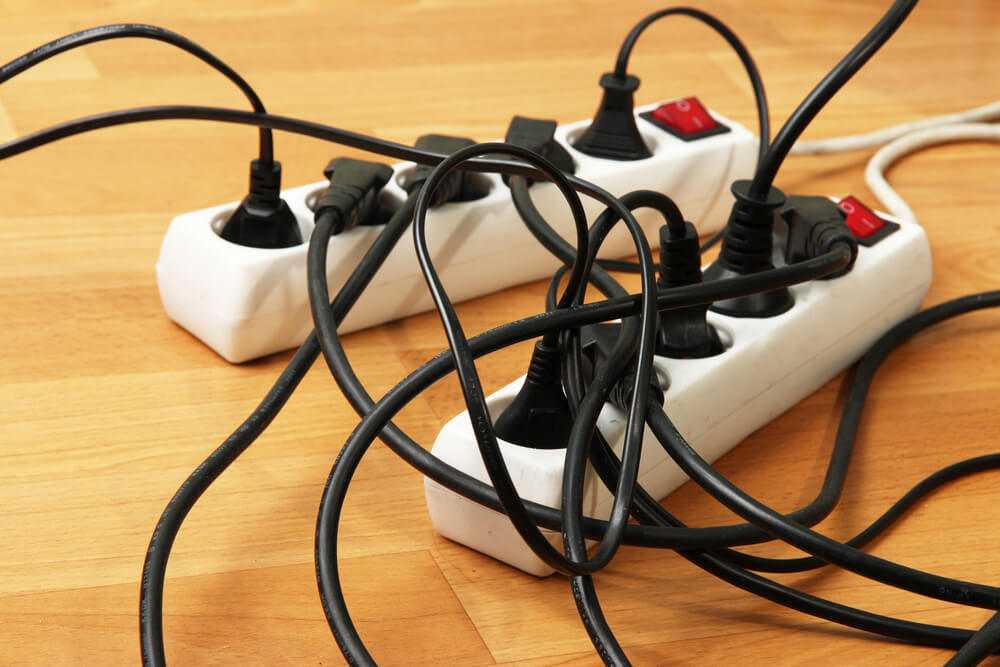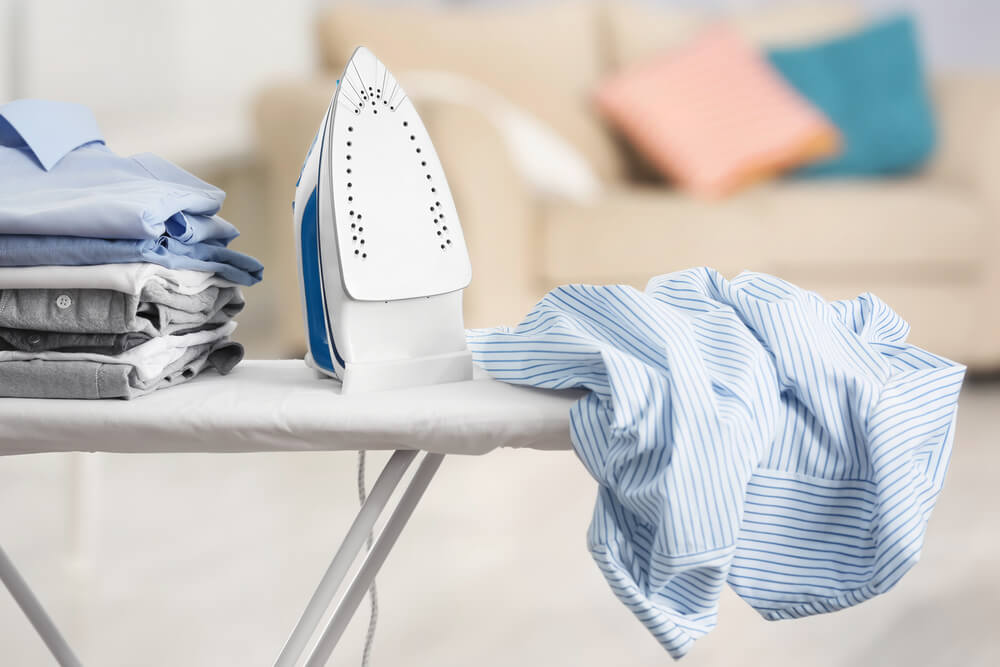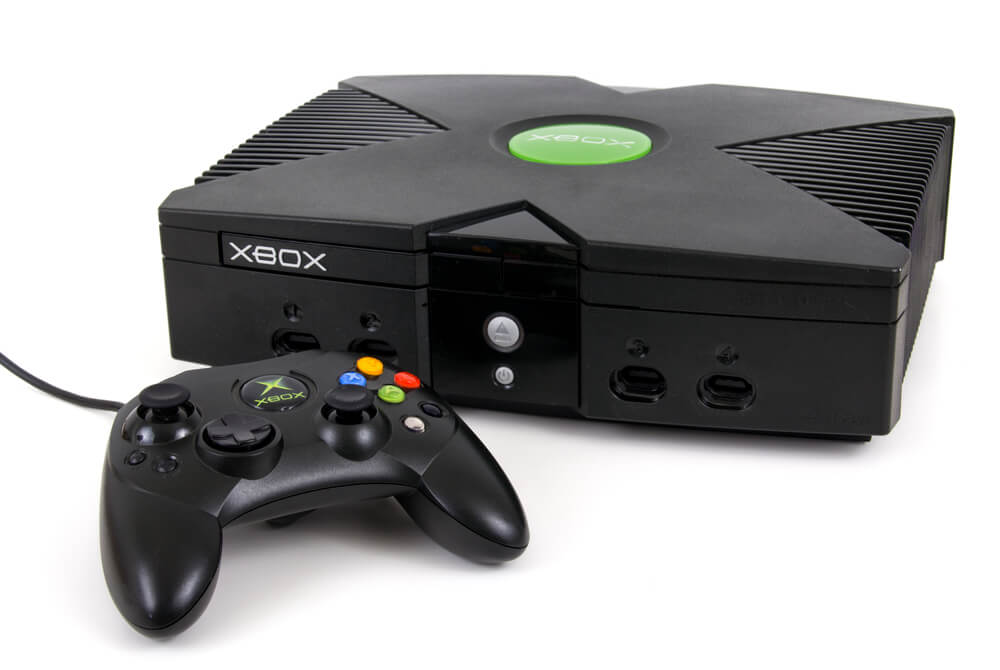Disclosure: This post may contain affiliate links. This means that at no cost to you, we may earn a small commission for qualifying purchases.
Last Updated on April 7, 2024
Excess energy consumption harms the environment and your wallet. To save money on your monthly power bill, it’s important to know about the average energy breakdown of your home appliances and how to cut down on that power further.
Contents
What Appliances Use the Most Electricity?
Heating appliances consume the most energy, according to the U.S. Energy Information Administration.
In total, these household appliances consume about 46% of a home’s electricity. Specifically, the central air conditioner uses about 17% of your home’s energy, space heater an additional 15%, and water heating uses 14% and the sewing machine uses about 100 watts.
Next up on the list is your home’s lighting, which takes 10% of your yearly energy usage. Refrigerators and TVs consume 7% on average, followed by clothes dryers at 5%.
Twelve percent of your home’s energy uses goes into miscellaneous items, like ceiling fan, dehumidifiers, microwaves, and hot tub heaters.
So if you’re looking to save on your energy bill or reduce your carbon footprint, tackle your home’s heating and cooling first. It accounts for nearly 50% of your energy consumption, and it makes more sense to prioritize heating and cooling before investing in energy-efficient appliances.

What Uses the Most Electricity in a Home?
According to Silicon Valley Power, the following appliances use the most electricity in a home:
- Running a 75-gallon or greater water pump. On average, a large water heat pump uses about 111.8 kWh per month and costs $14.53 per hour to use.
- Older-unit refrigerators use 150 kWh per month. That costs about $19.50 a month. Newer models use a fraction of that power, averaging around 30 kWh (about $5) a month. Remember that some items, such as garage door opener,is used only for a fraction of an hour or minute per day.
- Cable boxes use a surprising amount of electricity. They average around 139 kWh per year or $18.07 annually.
- An electric kettle uses about 1200 watts per day.
- Space heaters can use a lot of energy. A portable 1,500-watt space heater uses 1.5 kWh, or $0.20, per hour. If you use a space heater to stay warm at night, that much power translates to about $1.60 a night, or about $48 a month if you use a space heater when you sleep.
Which Appliance Use More Energy?
Below are common appliances that might surprise you with their energy consumption, according to Silicon Valley Power.
1. A Clothing Iron Uses More Electricity Than a Vacuum
Though vacuums are larger than clothing irons, they consume less energy than the latter. Vacuums consume 0.75 kWh per hour while clothing irons use 1.08 kWh per hour. Also, the electricity consumption of an electric blanket is 200 watts.
The energy consumption means that vacuums cost $0.10 per hour to operate while the iron requires $0.14 per hour.
If you have the choice, though, go for the most energy-efficient vacuum — a robot vacuum. They use 0.007 kWh per hour, which works out to less than one cent an hour.
2. A Curling Iron Needs Less Electricity Than a Blow Dryer
You might wonder if the same logic applies to your or your partner’s hair styling tools. Curling irons heat up to 200 to 300 degrees Fahrenheit, so they should consume more energy than a hair dryer, right?
Actually, it’s the other way around. Blow dryers require ten times the energy than a curling iron does. A blow dryer consumes 1.5 kWh, or $0.20, per hour, whereas a curling iron uses 0.15 kWh, or $0.02 per hour, an hour. An electric shaver uses about 15 watts.
3. Xbox Ones Are the Most Energy-Consuming Gaming Consoles
A lot of home appliance energy breakdown guides overlook gaming consoles. Game console can be a costly addition to your energy bills.
The Xbox One consumes 233 kWh per year. That breaks down to $30.29 annually. The Playstation 4 comes second with consuming 181 kWh per year — $23.53 per year.
The Nintendo Switch is third with its 157.7 kWh annual energy consumption ($20.50 per year). Finally, the Nintendo Wii U consumes the least amount of energy out of all four gaming consoles, using only 37 kWh per year, or less than $5 to power annually.

Which Major Appliance Uses The Most Energy?
Electric furnaces use the most energy at home, according to Silicon Valley Power. Clothing Iron Consumes More Electricity than Vacuum Cleaner. Office appliances like a paper shredder and desktop computer use a significant amount of energy.
Next up on the list is an electric water heater, then your refrigerator (especially older models), toaster oven/microwave oven, and boilers.
How to Calculate Your Annual Energy Consumption and Cost
The United States Department of Energy describes the following way to estimate your yearly energy consumption.
1. Assess How Many Hours a Day an Appliance Runs
Do this with a rough estimate using your current knowledge of how an appliance operates. For instance, if you use your dishwasher once a week and it tends to run for about one hour and a half.
Other appliances won’t be as easy to assess. Appliances like refrigerators that seem to be on constantly actually throttle energy needs to maintain internal temperatures. Also, a coffee maker/coffee machine uses about 1000 watts.
Alternatively, you could keep a log to take the guesswork out of how often you run your appliances. A simple notebook or app on your phone makes it easy to jot down how often you’ve run the washing machine, clothes dryer, dishwasher, and other home appliances.
2. Find Out The Wattage of Each Appliance
Some appliances have their wattages stamped on the back or bottom. Manufacturers list the wattage as the maximum power your device draws from the electrical grid, but the actual power it uses depends on the setting at which you use the machine.
For example, washing clothes with hot water uses more electricity than with cold water. Fans set to higher, faster settings require more electricity than slower-moving fans.
You could also multiply the appliance’s amperes usage by voltage usage if you don’t see the wattage somewhere. If manufacturers don’t list wattage, they’ll probably list amperes instead.
Many appliances in the United States use 120 volts, though larger appliances like washers and dryers use 240 volts. Check the owner’s manual for these numbers if you can’t find them on the machine.
Online resources can also help you find the numbers you need, such as Home Energy Saver by the Berkeley National Lab. This site lists a wide range of appliances along with their estimated wattages and annual energy use in addition to other pertinent traits, such as when people tend to use certain appliances more (e.g., the electric oven during the holiday season).
You could also check Energy Star’s website. Energy Star is the U.S. government-backed badge for energy-efficiency, and you’ll probably find your appliances listed on this website.
3. Use the Following Formulas
According to the Department of Energy, here’s how to find your daily power consumption:
(Wattage × Hours Used Per Day) ÷ 1000 = Daily kilowatt-hour consumption.
Energy companies bill energy expenditure in kilowatt-hours, so that’s the unit we’re using for our calculations.
Now that you have your daily energy consumption, here’s how to find your annual energy usage.
Daily kWh consumption × number of days used per year = Annual energy consumption
And if you want to calculate the cost of using this much energy a year:
Annual energy consumption × utility rate per kilo Watt-hour = Annual cost to run the appliance
Calculating the cost of your energy consumption provides a clearer sense of how much energy you’re using, as kilowatt-hours feel like an abstract unit.

How to Reduce Power Consumption With Your Home Appliances
The following tips will help you reduce your monthly energy bills.
1. Invest in Insulation
Proper insulation prevents cold air from escaping. It also stops outside air from entering your home. Since heating and cooling use the most amount of energy, improving your home’s insulation will help you save money.
2. Use a Smart Thermostat
If redoing your insulation would cost too much, consider getting a smart thermostat instead. These thermostats allow you to program when and for how long you keep your A/C on, thus reducing your home’s energy consumption.
3. Unplug Electronic Devices When You’re Not Using Them
Phantom loads refer to the power that an appliance continues to draw in standby mode.bYour television or desk lamp, even when turned off, still uses up electricity.
The easiest way to reduce phantom loads is to simply unplug your electronics when not in use.
4. Turn Down Your Water Heater’s Temperature
When taking a shower, you often have to mix the hot water with cold water to make the temperature tolerable. Why do you need to do this? You’re wasting energy to heat water to a temperature you won’t use.
Lower the temperature on your water heater to a comfortable shower temperature, about 90 to 111 degrees Fahrenheit. Anything greater than 112 degrees can cause scalding hot burns within five minutes.
5. Purchase Energy-Efficient Appliances
When it’s time to upgrade your refrigerator, dishwasher, or other home appliance, consider purchasing an energy-efficient model. Just replacing your light bulbs with energy-efficient models can save you $75 a year, according to the Department of Energy.
Also Read: What Can a 7000W Generator Run?
6. Replace Your Air Filters
When dust, pet hair, and other debris obstruct your air filter, your furnace and AC unit have to work harder to warm or cool the same amount of air. It’s cost-efficient in the long run to change your filters frequently.
Final Thoughts
Your heating and cooling systems account for a significant portion of your energy bills. Upgrading these appliances and focusing on maintenance like cleaning air ducts and replacing filters can help you save money.
Related Articles: